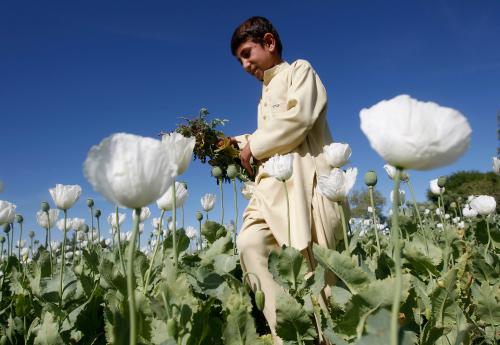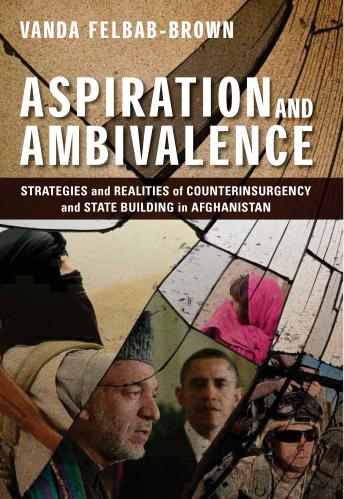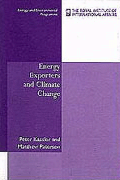The new U.S. counternarcotics strategy in Afghanistan, recently unveiled in Rome by Richard Holbrooke, the Obama administration’s special envoy for Afghanistan and Pakistan, represents a courageous and welcome shift in American policy. Instead of focusing on eradication, the new strategy promotes legal alternatives for farmers by emphasizing rural development and the interdiction of drug traffickers.
The new policy is courageous because it breaks with the decades-long history of U.S. counternarcotics policies abroad—involving intensive eradication, regardless of whether such a suppression policy did in fact enhance local counterinsurgency and sustainably reduce the cultivation of illicit crops.
Results from both Asia and Latin America show that these eradication policies have been a failure. In Peru, during the 1980s, eradication fuelled the Communist Shining Path insurgency by cementing the bond between the coca farmers and the guerrillas. (The Peruvian government finally managed to defeat the Shining Path in the countryside when it abandoned eradication.) In Colombia, the leftist guerrilla group Revolutionary Armed Forces of Colombia (FARC) has been severely weakened as a result of U.S. military assistance to Colombia’s armed forces. But it was the military’s ability to pin down FARC columns and prevent their movement, not eradication, which curtailed the FARC’s physical resources. Eradication actually has alienated cocaleros from the military, and has motivated them to deny intelligence on the FARC to government operatives, despite the fact that the FARC’s popularity is at an all-time low.
In Afghanistan too, the eradication policy has proved ineffective in both reducing the extent of poppy cultivation, which in 2007 and 2008 reached levels unprecedented in the history of the modern drug trade, and in curtailing Taliban funding. Instead, eradication has driven large segments of the rural population into the hands of the Taliban. Although the Taliban’s ideology does not appeal to most ordinary people, the Taliban was able to exploit eradication to offer itself as a protector for the villages and tribes that are dependent on poppy cultivation for essential livelihood.
The recently announced drug policy is appropriate because it meshes with the new counterinsurgency approach in Afghanistan. U.S. General Stanley McChrystal has announced that the surge of American troops in Afghanistan is designed to provide greater security for the population. Instead of chasing the insurgents in far corners of the country and leaving the population vulnerable to Taliban return and reprisals, North Atlantic Treaty Organization (NATO) forces will clear areas of the Taliban and stay for as long as it takes to resurrect governance and development. Intensified eradication, such as the aerial spraying that some in the Bush administration repeatedly advocated, would have fundamentally undermined this strategy. By destroying the population’s sole source of livelihood, eradication would have negated what the new “surge” strategy promises to do: secure the population and give it hope for the future, and hence also a stake in siding with the Afghan government against violent extremists.
As always, however, the angel and the devil are in the details, and the new strategy is not without potential pitfalls. Interdiction, which in Afghanistan will target Taliban-linked traffickers, is important because such law enforcement is the primary means of ensuring that the coercive and corrupting power of drug trafficking organizations does not threaten the state. Diminishing their power is all the more urgent in Afghanistan since a sense of impunity and abuse of power pervades the country. However, it is important that non-Taliban linked traffickers are also targeted, so that interdiction does not send a signal that the best way to be a trafficker in Afghanistan is to be a member of the Afghan government. (Many have already discovered the advantages of running the drug trade from positions of law enforcement and counter-narcotics). Interdiction also needs to be tailored carefully to the building of effective and un-corrupt law enforcement capacity in Afghanistan, so that if it triggers turf wars among traffickers (as in Mexico), the state is ready to deal with it.
Ultimately, rural development is the key to reducing the illicit economy and its multiple pernicious effects in Afghanistan, and the Obama administration is right to make it the centrepiece of the new policy. But it is a long-term painstaking process that needs to counteract the structural drivers of poppy cultivation. Security is critical: Without it, rural development won’t have a chance to take off. The development efforts need to assure legal microcredit, roads, fertilizers, irrigation and access to land for the farmers.
But the focus on new crops needs to go beyond subsistence. Wheat especially is not the way to go in Afghanistan. All of the arable land of Afghanistan could be planted with wheat, but due to population density, the people would still be lacking in subsistence. Because wheat is also far less labour-intensive than poppy, it could employ only about 15% of the population engaged in poppy cultivation and harvesting.
Four decades of experience with alternative livelihoods around the world show that the focus needs to be on assured import and export markets and value-added chains, which in the case of Afghanistan means diversified high-value high-labour-intensive crops, such as fruits, vegetables, and saffron. While the correct strategy, rural development will take time. Strategic patience is as necessary for success in counternarcotics, as in counterinsurgency.









Commentary
Op-edTarget the Drug Lords in Afghanistan, Not the Farmers
July 15, 2009